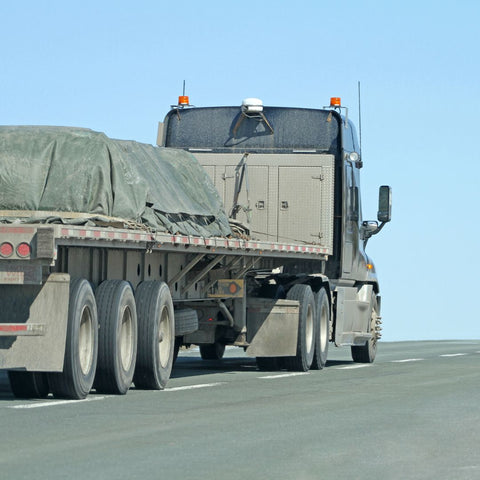Introduction
Securing your flatbed load properly is not just a matter of compliance; it's a vital safety measure that ensures your cargo reaches its destination intact. Tarps, straps, and D-rings are some of the indispensable tools providing stability and protection against the elements during transportation. In this guide, we'll delve into some essential tips and tricks for effectively utilizing these tools to secure your flatbed load, keeping both your cargo and those on the road safe.
Choose the Right Tarps
Invest in high-quality tarps that are specifically designed for flatbed loads. Look for durable materials such as heavy-duty vinyl or polyethylene that can withstand harsh weather conditions and resist tearing. Additionally, ensure the tarp size is adequate to cover your entire load, providing an overlap on all sides for optimal protection.
How to Tarp a Flatbed Load
Tarping a flatbed load is more than just covering your cargo; it's about ensuring its safety and protection during transportation. Properly securing your load with a tarp not only safeguards against weather elements but also prevents debris from falling off and potentially causing accidents on the road. In this guide, we'll walk you through the step-by-step process of tarping a flatbed load, covering everything from preparation to securing techniques.
1. Preparation is Key

Before you even begin tarping your flatbed load, take the time to prepare adequately. This includes gathering all the necessary materials such as the tarp itself, bungee cords or straps, D-rings, and any other securing tools you may need. Additionally, ensure your flatbed is clean and free of debris to prevent any damage to the tarp or your cargo during the tarping process.
2. Positioning the Tarp
Once you have your materials ready, position the tarp evenly over your flatbed load. Ensure that the tarp covers the entire cargo with enough overlap on all sides to provide maximum protection. Be mindful of any sharp edges or protrusions that could potentially tear the tarp and make adjustments accordingly.
3. Securing the Tarp

Securing the tarp is arguably the most crucial step in the tarping process. Start by using bungee cords or rubber tarp straps to fasten the tarp to the flatbed, making sure it is tightly secured to prevent any flapping or movement during transit. Pay close attention to the corners and edges of the tarp, as these are the areas most prone to lifting and coming loose during transportation.
4. Utilize D-Rings for Extra Stability
D-Rings are invaluable tools for providing additional stability to your tarp and preventing it from shifting or lifting during transit. Position D-Rings strategically along the edges of your flatbed, ensuring they are securely attached to the frame and can withstand the forces exerted during transportation. Some truck tarps can also have a couple of rows of D-Rings, offering even more points for secure attachment. Use straps to connect the D-Rings to the tarp and tighten them securely to distribute the tension evenly.
5. Addressing Potential Weak Points
As you secure the tarp, be mindful of any potential weak points or areas that may be susceptible to damage or tearing. Double-check seams, corners, and any areas where the tarp may come into contact with sharp edges or abrasive surfaces. Consider reinforcing these areas with additional bungee cords or straps to provide extra protection and peace of mind.
6. Inspect and Adjust as Needed

Once the tarping process is complete, take the time to inspect your work thoroughly. Check for any signs of loosening, tears, or damage to the tarp and address them immediately to prevent potential hazards on the road. Additionally, be prepared to make adjustments as needed during transit, especially if you encounter changing weather conditions or shifting cargo.
Stay Compliant with Regulations
Familiarize yourself with federal and state regulations regarding load securement to ensure compliance and avoid fines or penalties. Stay up-to-date on any changes or updates to these regulations, and adjust your practices accordingly. Proper load securement not only protects your cargo but also promotes safety for all motorists on the road.
Conclusion
Securing your flatbed load using tarps, straps, and D-Rings is a critical aspect of transportation safety. By following these tips and tricks, you can ensure your cargo reaches its destination securely and without incident. From choosing the right tarps to practicing proper load distribution and conducting regular inspections, every step plays a vital role in maintaining safety and compliance on the road. Remember, investing time and effort into proper load securement not only protects your cargo but also promotes safety for everyone sharing the highways and byways of the USA.






